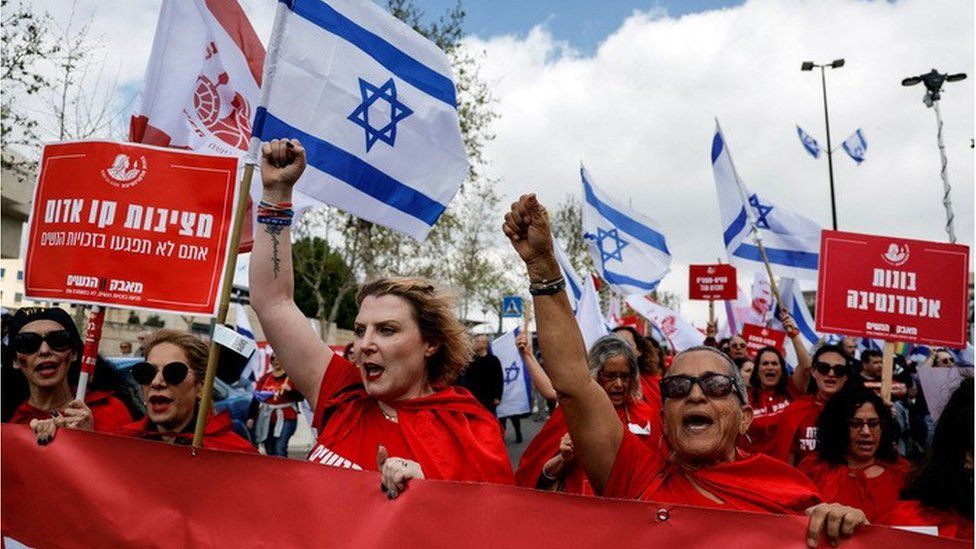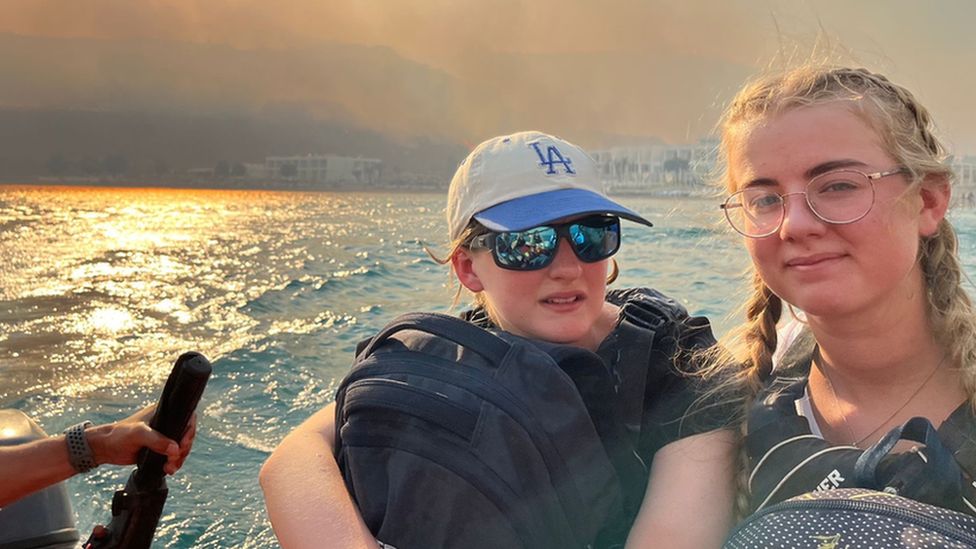Two days after a dramatic uprising by the Wagner Group, which saw a convoy of mercenary fighters heading to Moscow, we spent the majority of Monday wondering where Vladimir Putin was.
A Wagner mutiny agreement was announced late on Saturday by a Putin spokesman. But when will the president address the contentious agreement himself?
It was contentious because Russian air force pilots had been killed in the mutiny by the Wagner mercenaries, who had taken control of military installations and marched on Moscow with apparent ease. However, the Kremlin had agreed to put a stop to the uprising in exchange for dropping charges against Yevgeny Prigozhin and the Wagner fighters.
In an apparent effort to calm the situation, President Putin has appeared in public in an unusual number of ways over the past week, all of which were broadcast on television.
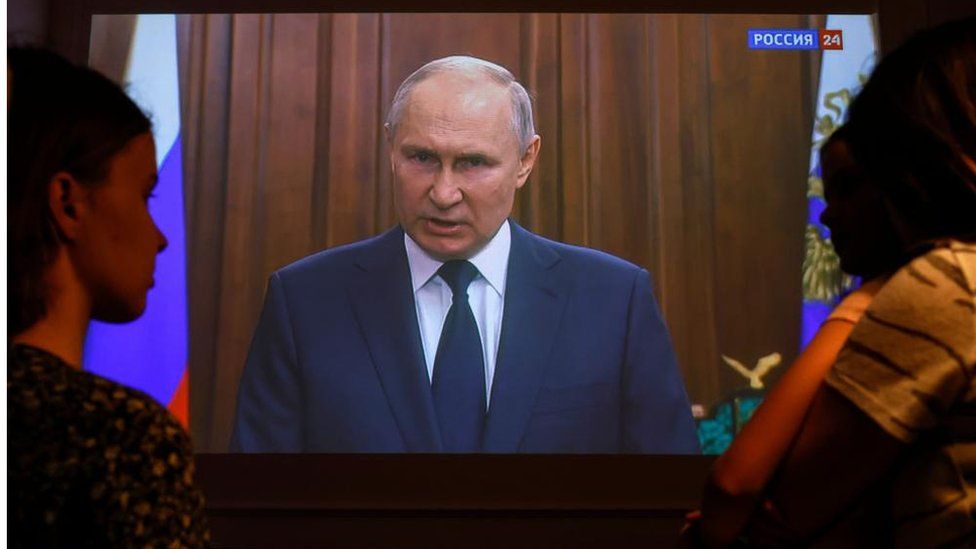
On Monday, we get a message from Mr. Prigozhin in the form of an online audio message outlining his perspective. He claims that his troops went to Moscow to "hold to account" the political figures he held responsible for "mistakes" in the Ukraine war.
Then, in the wee hours of the night, a declaration is made. Putin will address the country; stand by. It appears that the Kremlin leader is currently playing catch-up.
Putin makes an appearance on TV after 10 p.m. It's unusual for him to give a late-night address. There are numerous rumors circulating on social media that this speech will "decide the fate of Russia.". We nervously turn on the Russian television to listen to the president speak.
It quickly becomes clear that the future of the nation will not be decided at this address. Nothing significant has been announced. The five-minute speech does, however, offer hints as to how the Kremlin plans to use the dramatic weekend events to its advantage.
In order to foil Wagner's leaders' treachery, Putin presents a picture of a united Russia.
He makes an effort to win over everyone, thanking the people of Russia, Russian officials, religious figures, the Russian armed forces, and his security services. He distinguishes between the mutiny leaders and the regular Wagner fighters and commanders, whom he praises as patriots. He makes a point of portraying himself as the person who stopped a lot of bloodshed.
He claims that actions were taken to prevent bloodshed as soon as these events got underway, as per his direct orders.
He doesn't address the controversy I was referring to. Russia has, however, pulled back from the edge. The primary issue is that.
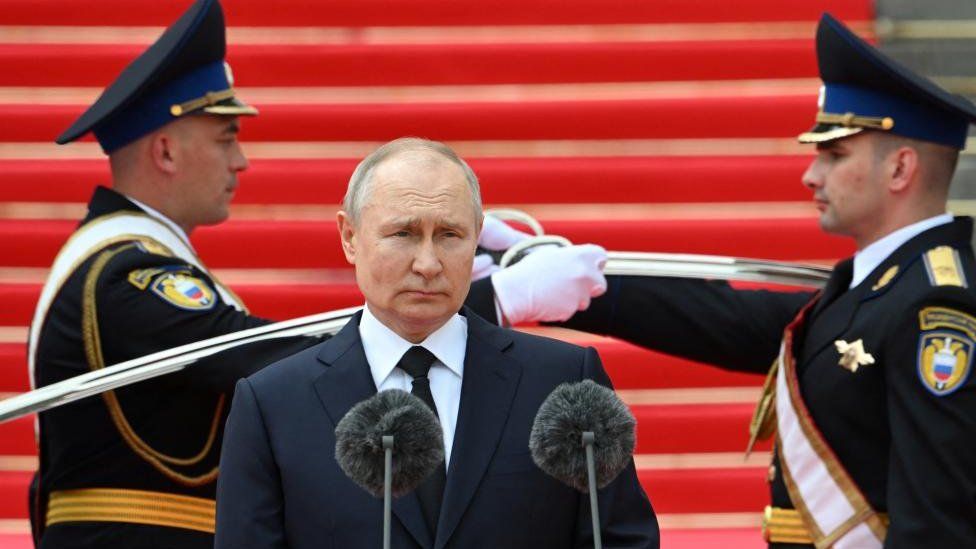
He was catching up on Monday. Tuesday morning sees the attempt to reclaim his authority moving full speed ahead.
The Russian government is using a lot of pomp and ceremony at an event that was hastily planned. The Cathedral sq\. of the Kremlin is lined with about 2,500 soldiers, Russian Guard members, and security personnel. Here, Russian tsars' coronation (and funeral) processions are held.
Putin enters the scene, descending the many steps of the Kremlin onto the square (on a red carpet, of course), and, with the onion domes of the Kremlin cathedrals as his backdrop, the president and commander-in-chief makes a speech to his troops.
But the images speak for themselves even before he says anything. The Kremlin, the Orthodox Church, the president, and the army are all congregated in this one location. The phrase "For faith, for the Tsar, and for the Fatherland" brings to mind an old Imperial Russian rallying cry. ".
In other words, the visual messaging in this situation is focused entirely on portraying Russia as a nation that is supporting Vladimir Putin. It almost seems as though they want Russians to believe that the president, military, and church are connected or even a single entity.
President Putin reiterates in his succinct speech that the Wagner mutiny brought Russian society together. However, he praises his military for "stopping a civil war" the majority of the time.
There is a moment of silence in memory of the deceased air force pilots. The president is showing respect, but he hasn't yet addressed the issue of why the Wagner fighters' deaths haven't resulted in charges.
Speech ended. Fire salute and the national anthem to begin.
Message in a nutshell: The president is not solely in charge. He has just won a significant victory with the aid of the Russian army and the Russian people.
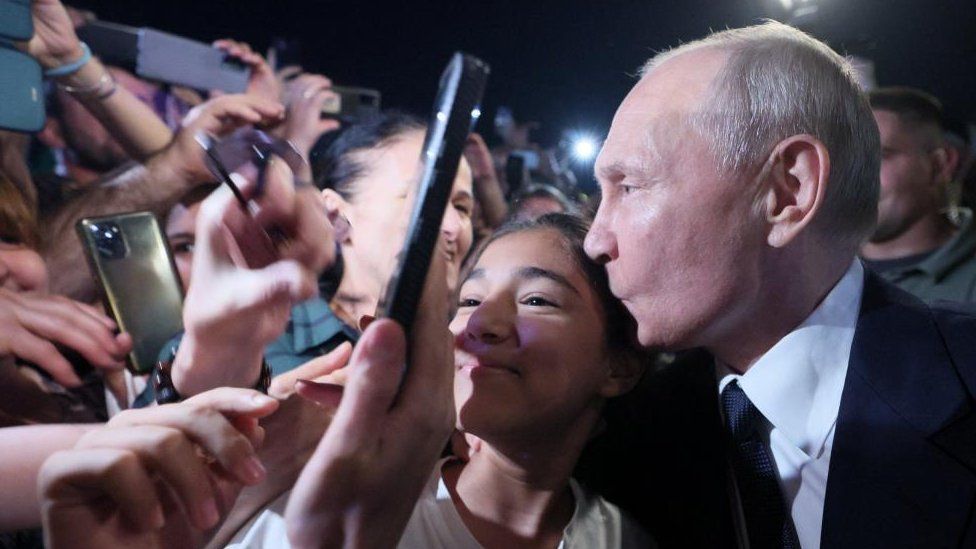
Most likely the most unexpected Putin video of the week, if not the entire year, is this one. This is due to the fact that the Putin we see is not at all like him when it comes to interacting directly with the crowds.
Officially, President Putin is in Dagestan to preside over a meeting on domestic tourism.
However, other news stories take center stage on Russian TV after the meeting. What's crazy are the scenes that come after.
An image from the city of Derbent depicts the head of the Kremlin being surrounded by fans.
We've grown accustomed to seeing Vladimir Putin avoid making eye contact with people. Those lengthy Kremlin tables with Putin safely seated at one end and his company at the other?
Not in this location. He is seen in Dagestan kissing kids, hugging women, shaking hands, and posing for pictures.
It receives a warm welcome on state television.
On the Russia-1 channel, the host of a well-liked talk show exclaims, "Screaming, squealing, applause.". Even rock stars are not given such a warm welcome. The West mocks the idea that the president has been weakened as a result of Prigozhin's rebellion. This shows that the contrary is true. ".
Putin's actions seem so out of the ordinary. However, nothing in Russia seems particularly normal right now.
An armed mutiny that the Russian president had just escaped. He might feel the need to prove to the populace, the political establishment, and even to himself that there are still people who support him. It would be appropriate to receive "spontaneous" public adoration.
As I look at these pictures, I suddenly remember what happened last weekend after the agreement to put an end to the mutiny was reached. On Saturday night, the streets of Rostov were filled with cheers as the Wagner fighters under the leadership of Mr. Prigozhin left.
Do those pictures make Vladimir Putin feel like he needs his own "hero" moment?
I doubt we'll ever find out.
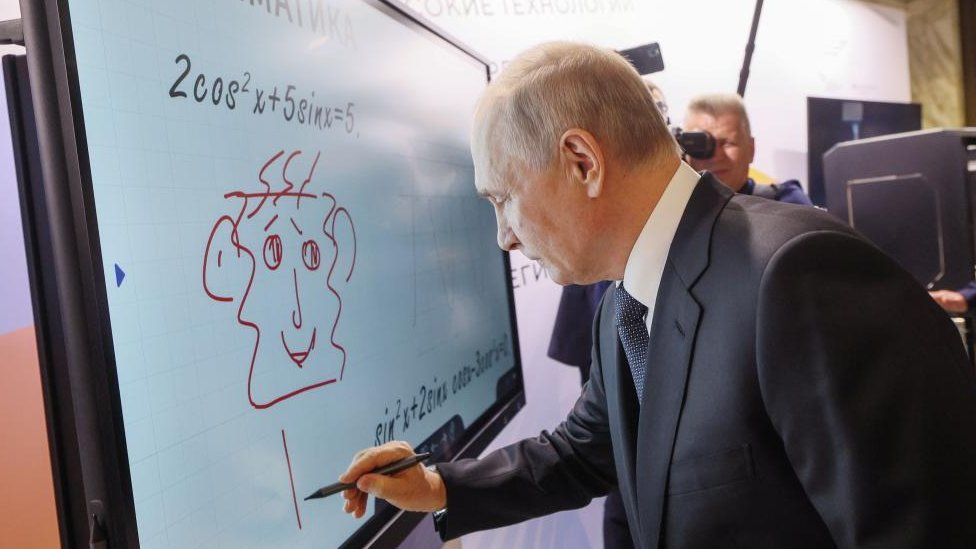
President Putin is in Moscow for a business conference on Russian brands. It's not exactly a moment fit for a rock star.
Still, he should seize every chance to demonstrate that he is in charge, active, and supported by the general public.
The hall erupts in cheers as the Russian president enters. He settles in to hear the opening remarks from one of the organizers.
"Vladimir Vladimirovich, along with you and the entire country we, too, lived through the events of June 24 [the mutiny] with anxiety," she says, addressing Putin. "We all stand by you and give you our support. " .
The delegates give Vladimir Putin a standing ovation as if to confirm this.
Another, marginally stranger video from the same incident is shown. On a digital whiteboard, President Putin is drawing.
A red face with three strands of hair that resembles a cartoon is the end result. Interesting insight from a leader who has mastered the art of political survival.
lines of devoted soldiers, salutes with guns, yelling supporters, and a standing ovation. The Kremlin leader is attempting to reassert control by using these types of images.
He even finds time to draw. He must feel secure at this moment.
We've seen a turbo-charged Putin this week as a result of the mutiny. He seemed to be everywhere—he was here, he was there. His current presidential term ends next year, so it was almost as though he had begun his reelection campaign.
However, the fact that the rebellion caught the Kremlin off guard cannot be changed by good pictures. It was threatening. The mutiny was put down while the Wagner fighters were already en route to Moscow. It was an unprecedented assault on Putin's power.
And it's still unknown what will happen down the road.




